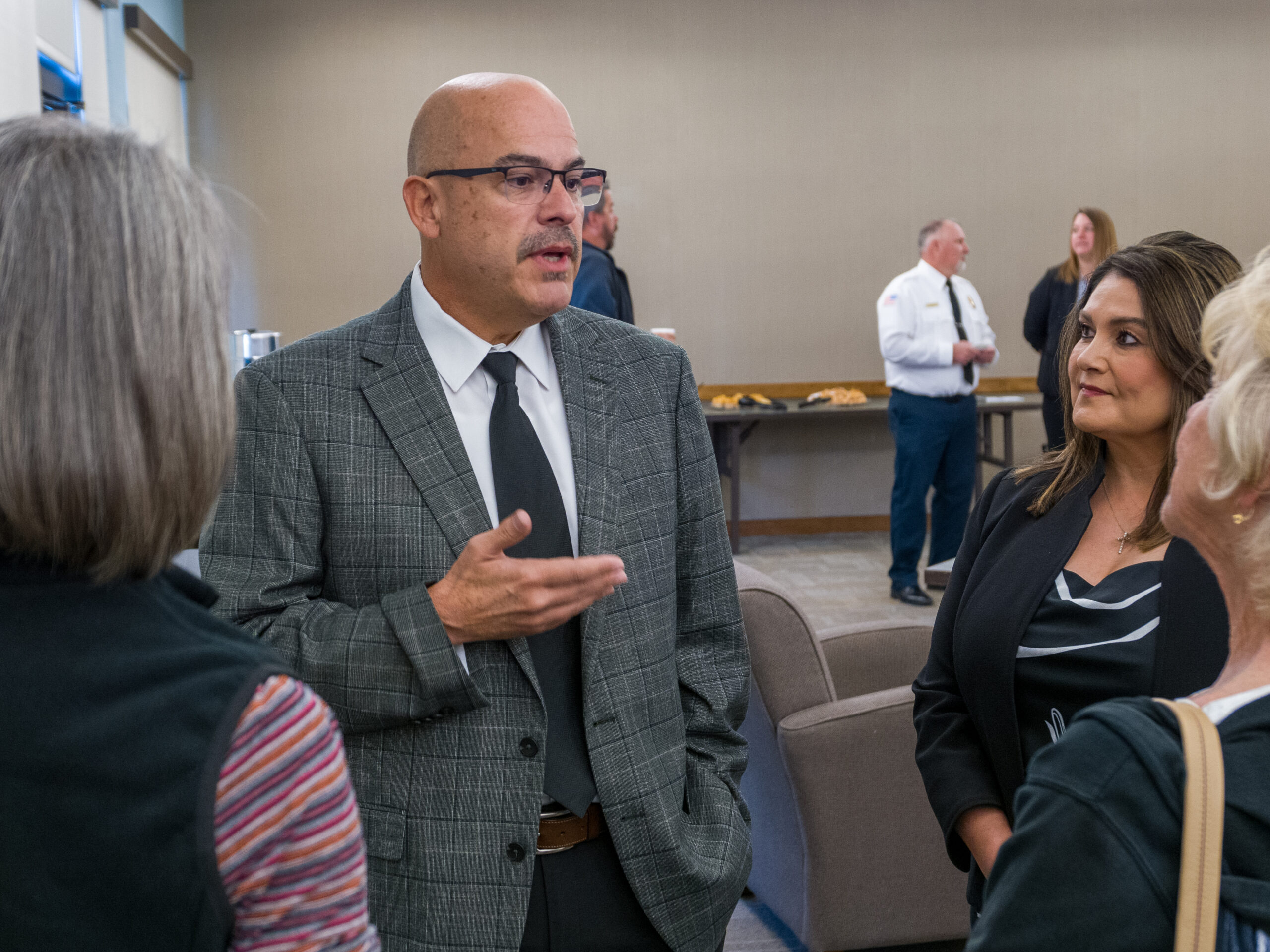In order to preserve its historic buildings, Jerome residents may face a new tax. “I have two words: Restoration tax,” said Vice Mayor Jay Kinsella at the April 11 meeting at Jerome Town Hall.
Kinsella had put the issue of how the town can preserve historic buildings on the agenda last month in response to the Cuban Queen — an historic bordello — falling in a windstorm. Kinsella said that the disrepair of the building in the years leading up to the storm was obvious and that this had something to do with its collapse. He said it was the responsibility of the town’s property owners to be guardians of the town’s history.
“Jerome is based on history,” he said. He said he would like his great-grandchildren to be able to enjoy the same architecture that he has been able to and also noted that a large portion of the town’s economy relies on a vibrant history.
Later, he would say that he was not a fan of new taxes, and that the idea should only be implemented if needed, as he saw the small town being susceptible to a collapse if tax rates went too high. He also advocated a more open dialogue with residents and possibly adding “teeth to ordinances.”
Councilwoman Alex Barber pointed to the recently introduced general plan, which noted that priorities for the town on the topic included informing property owners about tax breaks, as well as providing reasonable and practical assistance for owners.
Councilman Hunter Bachrach looked at the issue as a double-edged sword. He saw Kinsella’s argument that owners of historic homes should expect higher upkeep costs, but was reluctant to do too much, lest the town turn into a “replica town,” which he pointed to Tombstone as an example.
There was discussion of rebuilding the Cuban Queen in a way that would keep its historic status, with a placard that stated it had fallen.
Councilman Lew Courrier said he was comfortable with how the town is handling matters of historic building. He noted that the town has been involved with historic building projects, such as the issue with the Hotel Jerome roof.
Mayor Frank Vander Horst disagreed. He wanted to explore what other options the town had in helping out.
The public offered a range of actions they felt could help this dilemma. Having residents pool resources on community projects, denying demolition permits, buyouts and keeping relevant permit costs to restore or maintain historic buildings low were all brought up. Council will explore its options in more detail next month.
Historic Water
“The water is aged like a fine wine,” hydrologist Kristine Uhlman said of Jerome’s water supply. Uhlman gave a presentation earlier in the meeting that provided estimates for how old the town’s drinking water was since it had been precipitated. The estimate provided was around 140 years, but no more than 300.
The talk was the second in a study done to determine what may have caused the town’s supply to drop drastically in recent months. The supply has since spiked, which led Uhlman to conclude that seismic activity likely caused the cracks through which the groundwater flows to clog. Once the pressure from the clog built high enough, it was flushed out, causing the spike.
Prior to the study, there had been concern as to the sustainability of the town’s water supply. Uhlman said that the flow should level off at normal levels once summer hits. As far as sustainability, she said as long as there was snow on Mingus Mountain in the winter, the town should be OK.
Council also heard a presentation from Zoning Administrotor Kyle Dabney on the town’s risk during a seismic event. Dabner put the risk at a 3.55 out of 5 scale, with 5 being the highest risk.
One member of the public questioned the risks posed from fault lines running under and around the town.
“How much time do you have? You want me to list all my faults?” Vander Horst joked.
The fault lines were explained to be not of significant risk. The Sliding Jail issue was also brought up as a sign of seismic damage, but Kinsella dismissed the notion, saying that it had been proven that a misplaced stick of dynamite was what originally caused the foundation to begin to move


